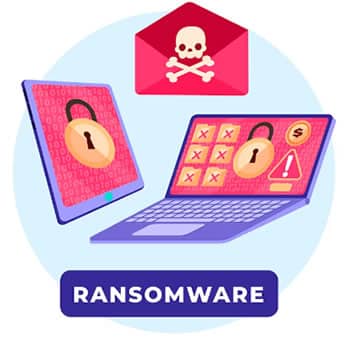Ransomware Incident Response Plan for a Business: A Step-by-Step Guide
Ransomware is a type of malware that encrypts a victim’s data and demands a ransom payment in exchange for the decryption key. Ransomware attacks can be devastating for businesses, as they can cause significant downtime and financial losses.
If your business is hit by a ransomware attack, it is important to have a response plan in place. This will help you to minimize the damage and get back to business as quickly as possible.
Contents
Here is a step-by-step ransomware incident response plan for businesses:
- Detect and contain the threat. As soon as you suspect that you have been hit by a ransomware attack, it is important to isolate the affected systems and networks. This will prevent the ransomware from spreading further.
- Assess the damage. Once the threat has been contained, you need to assess the damage. This includes determining which systems and data have been encrypted, as well as the impact on your business operations.
- Decide whether to pay the ransom. Paying the ransom is a difficult decision. On the one hand, it can be the quickest way to get your data back. On the other hand, there is no guarantee that the attackers will keep their word and decrypt your data.
- Restore your data from backups. If you have recent backups of your data, you can restore them to get your systems back up and running. However, it is important to note that if the ransomware has encrypted your backups, you will not be able to restore them.
- Eradicate the ransomware. Once you have restored your data, you need to eradicate the ransomware from your systems. This can be done using antivirus software or by manually removing the infected files.
- Report the incident to the authorities. If your business has been hit by a ransomware attack, it is important to report the incident to the authorities. This will help them to track down the attackers and bring them to justice.
Here are some additional tips for ransomware incident response:
- Have a plan in place. Don’t wait until you are hit by a ransomware attack to develop a response plan. Take the time to develop a plan in advance and test it regularly.
- Keep your systems up to date. Make sure that your systems are patched with the latest security updates. This will help to reduce the risk of being infected with ransomware.
- Educate your employees. Train your employees on how to identify and avoid phishing emails and other social engineering attacks.
- Back up your data regularly. Make sure that you have regular backups of your data stored in a secure location. This will allow you to restore your data if you are hit by a ransomware attack.
Handling communication during a ransomware attack incident
Communication is essential during a ransomware incident response. You need to communicate with your employees, customers, and business partners about the attack and the steps you are taking to respond to it.
Tips for communicating during a ransomware incident:
- Be transparent and honest. Don’t try to sugarcoat the situation or hide information from your stakeholders.
- Be timely with your updates. Provide regular updates on the status of the incident and the steps you are taking to address it.
- Be clear and concise. Use plain language that is easy to understand. Avoid using jargon or technical terms that your stakeholders may not be familiar with.
- Be empathetic. Acknowledge the impact that the incident is having on your stakeholders and offer support.
Here are some specific communication tasks that you may need to undertake during a ransomware incident:
- Notify your employees. Let your employees know about the attack and the steps they need to take to protect themselves and the company.
- Notify your customers and business partners. Let your customers and business partners know about the attack and how it may impact them.
- Notify the authorities. Report the attack to the appropriate law enforcement agencies.
- Notify the media. If the attack is significant enough, you may need to notify the media.
Communicating effectively during a ransomware incident, you can help to minimize the disruption to your business and build trust with your stakeholders. By following these steps, you can minimize the impact of a ransomware attack on your business and get back to business as quickly as possible.
Additional resources
https://www.linkedin.com/pulse/ransomware-incident-response-plan-business/

